In Review
Apocalyptic Grief, Radical Joy
A selected list of readings, films, and art from Terry Tempest Williams and Matthew L. Potts’s course.
Much of what is most beloved about our earth has already begun the process of dying. This syllabus engages practices of mourning and grief over this loss by focusing on categories of apocalypse, pastoral care, lament, and creative expression in theory, literature, art, film, advocacy, and memoir. Journal prompts offer readers the opportunity to reflect, grieve, and mourn, and to give witness to “the machinery of civilization breaking down, unable to recuperate from shocks to its system” (Scranton, Learning to Die in the Anthropocene, 14).
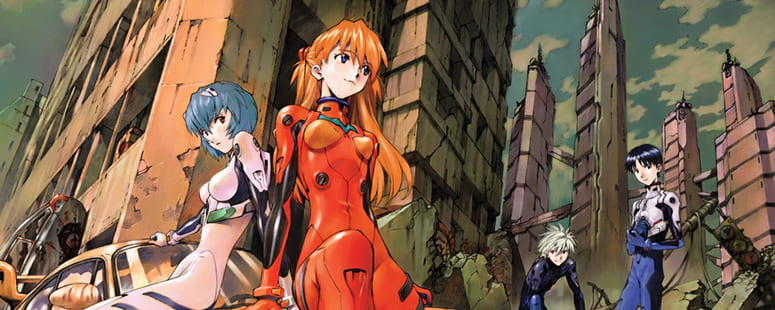
Neon Genesis Evangelion. VIZ media.
What is apocalypse? What good is grief?
Journal Prompt: Write about a personal experience of acute grief. What did that grief reveal to you? How was your world transformed by it?
“Apocalypticism and Popular Culture”
Lorenzo DiTommaso, in The Oxford Handbook of Apocalyptic Literature, ed John J. Collins (Oxford University Press, 2014)
The author explores nine cases that illustrate the wide range of apocalyptic expression in contemporary popular culture, among them: Neon Genesis Evangelion; The Matrix; Neuromancer; Promethea; A Canticle for Leibowitz; and the 2012 “Mayan Apocalypse.”
Precarious Life: The Powers of Mourning and Violence
Judith Butler (Verso Books, 2006)
A philosopher and gender theorist’s passionate call for a deeper understanding of how mourning and violence might inspire solidarity and a quest for global justice in post-9/11 America.
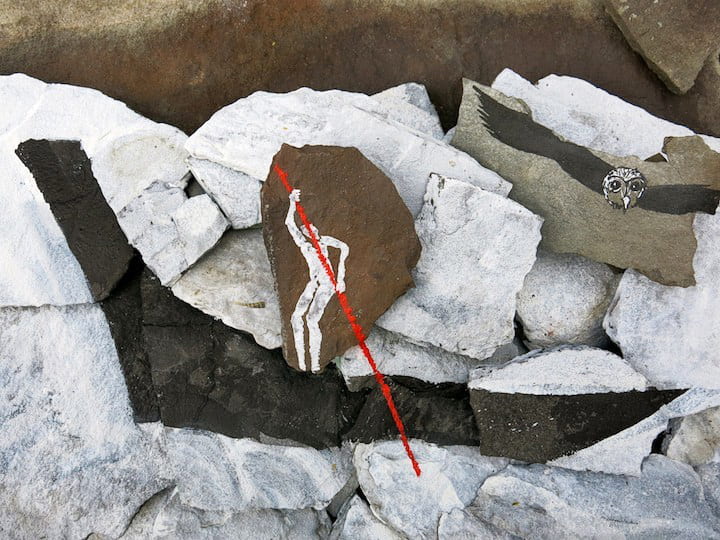
Mary Frank, Migration I (2015–17).
Grief as a pilgrimage
Journal Prompt: Create a narrative (story, poem, song) by choosing one image, several, or all from Mary Frank’s tableaus.
Pilgrimage: Photographs by Mary Frank
Mary Frank (Eakins Press Foundation, 2017)
With assemblages of stone, charred wood, ice, fire, flowers, and branches, artist Mary Frank creates, then photographs, mythic, rugged worlds where silhouetted, archetypal figures interact with each other and their often harsh environments.
Learning to Die in the Anthropocene: Reflections on the End of a Civilization
Roy Scranton (City Lights Books, 2015)
A war veteran and journalist’s bracing response to climate change combines memoir, reportage, philosophy, and Zen wisdom to explore what it means to be human in a rapidly evolving world. Scranton argues that “we have to learn to die not as individuals, but as a civilization.”
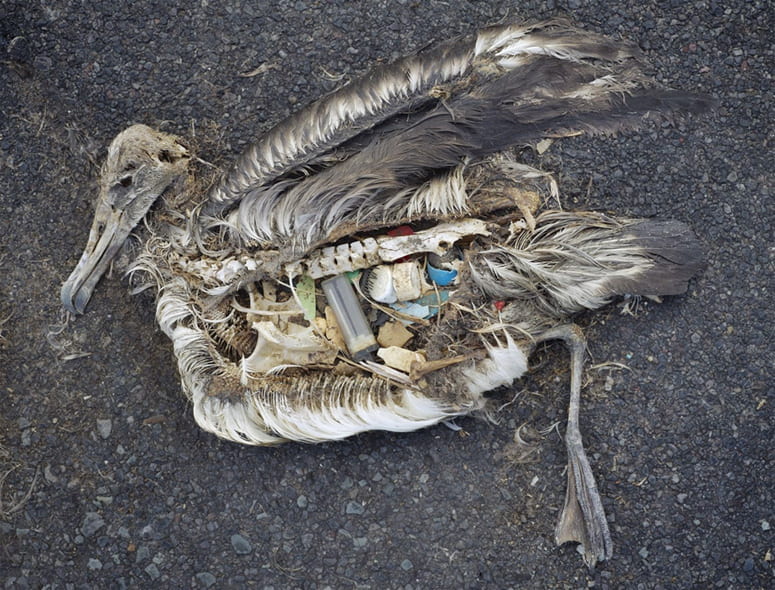
Chris Jordan, Albatross
Bearing witness as a spiritual practice
Journal Prompt: Write about a personal moment of witness to an injustice or a tragedy and consider how it has shaped your spiritual, emotional, or political understanding of the world.
“The Rime of the Ancient Mariner”
Samuel Taylor Coleridge (poetryfoundation.org)
Composed in 1797–98, this ballad narrates the spiritual and natural consequences ensuing from a sailor’s act of transgression in slaying the albatross following his ship.
Albatross
Directed by Chris Jordan, 2017
This intimate journey into the lives of a North Pacific rookery of albatross documents the devastating and deadly impact of ocean plastic pollution upon the young.
“Planetary Health: Protecting Global Health on a Rapidly Changing Planet”
Samuel S. Myers (Academy of Medical Sciences & Lancet International Health Lecture 2017)
The director of the Planetary Health Alliance and senior research scientist at the Harvard T.H. Chan School of Public Health explores the impact of environmental damage upon planetary and human health and offers strategies of response.
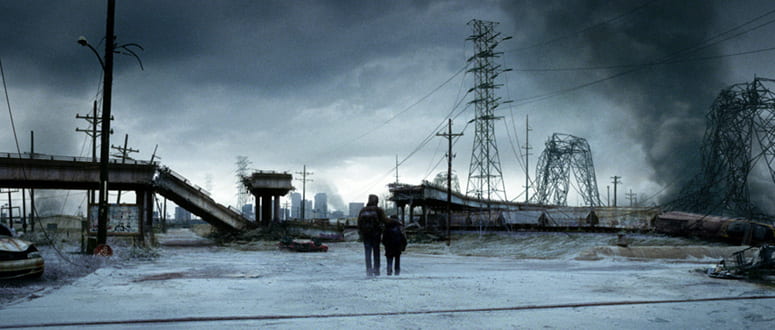
The Road. Dimension Films.
Our body, the body of the earth: Sacred rage
Journal Prompt: What might “Sacred Rage” mean in terms of Earth defense and environmental justice? How do you find beauty in a broken world?
The Road
Cormac McCarthy (Alfred A Knopf, 2006)
A meditation on the worst and the best that humans are capable of, this novel follows the journey of a father and son through a post-apocalyptic American landscape starved of plant and animal life.
The Book of Joan
Lidia Yuknavitch (Harper, 2017)
This novel offers a post-apocalyptic vision of a radioactive world ravaged by war, violence, and greed, and a uniquely gifted heroine—a reimagined Joan of Arc—whose story will forge the destiny of an entire world for generations.
Surviving Genocide: The 1994 Genocide against the Tutsi
Lily Yeh (Shandy Press, 2017)
With photographs, art, and words this book immerses readers in the stories of two Rwandan children, the horrific tragedy each survived, and the courage necessary for surviving and reflects upon the importance of remembrance.
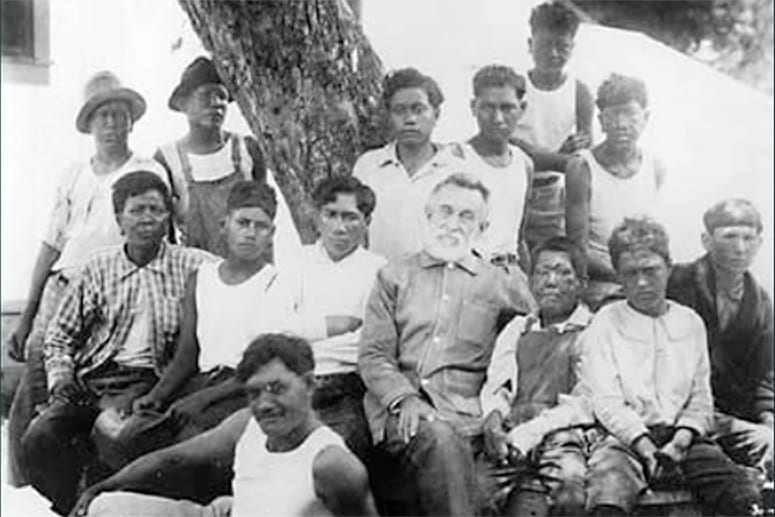
Father Damien sitting with Kalaupapa leper colony patients. National Park Service.
Imagining the end of the world
Journal Prompt: What is hope? What is hope for?
When We Are Called to Part: Hope and Heartbreak in the Vanishing World of the Kalaupapa Leprosy Settlement
Brooke Jarvis (Atavist, 2013)
An autobiographical account of time spent in a rapidly vanishing American leprosy settlement on a remote Hawaiian peninsular.
Housekeeping
Marilynne Robinson (Picador, 1980)
The story of two sisters who grow up haphazardly and struggle toward adulthood in the small town of Fingerbone on a glacial lake in the Far West, a town “chastened by an outsized landscape and extravagant weather, and chastened again by an awareness that the whole of human history had occurred elsewhere.”
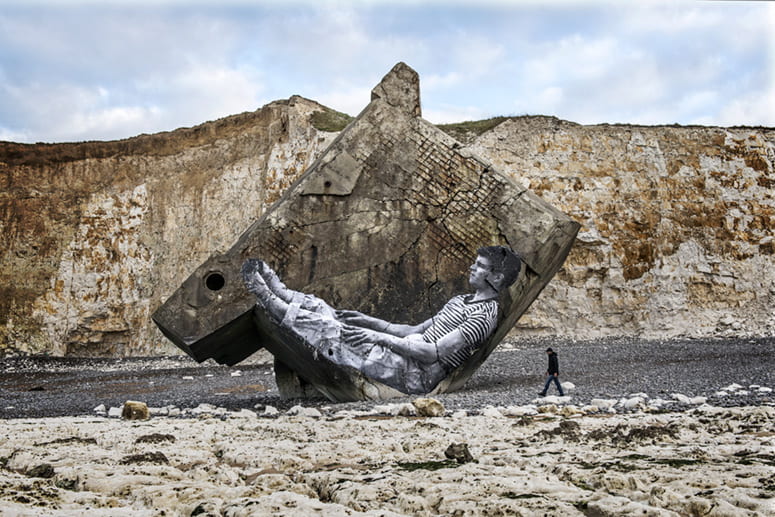
Agnes Varda and JR, Faces Places.
Radical joy and resistance
Journal Prompt: What six qualities do you, personally, see as being needed at this moment in time? Or consider how acts of joy in an apocalyptic landscape might join hands with grief in creating a planetary consciousness—or not.
Six Memos for the Next Millennium
Italo Calvino (trans. Geoffrey Brock; Mariner Books, 2016)
This set of lectures, prepared by renowned twentieth-century storyteller Italo Calvino (1923–85) at the time of his death, describes the qualities he believed should define literature in the century to come.
Joyful Militancy: Building Resistance in Toxic Times
Nick Montgomery and Carla Bergman (AK Press, 2017)
In conversation with organizers and intellectuals from a wide variety of political currents, these authors explore the ways congealed and toxic forms of relating have seeped into social movements, and how such rigid radicalism is being undone.
Bidder 70
Produced and directed by Beth Gage & George Gage, 2012
A film about economics student Tim DeChristopher (MDiv ’17), whose extraordinary act of civil disobedience demanded government and industry accountability, igniting a spirit of civil disobedience in the name of climate justice.
“Grief and Resistance: The Mass Grave Pipeline Action”
Tim DeChristopher (timdechristopher.org)
Activist and political prisoner Tim DeChristopher writes about his participation in a protest against a natural gas pipeline being laid in a West Roxbury neighborhood of Boston.
Faces Places (Visages Villages)
Directed by Agnès Varda and JR, 2017
French New Wave filmmaker Agnes Varda teams ups with acclaimed photographer and muralist JR to co-direct a road movie through the villages of France. They meet locals, learn their stories, and produce epic-size portraits, which are prominently displayed on houses, barns, storefronts, and trains.
Please follow our Commentary Guidelines when engaging in discussion on this site.

